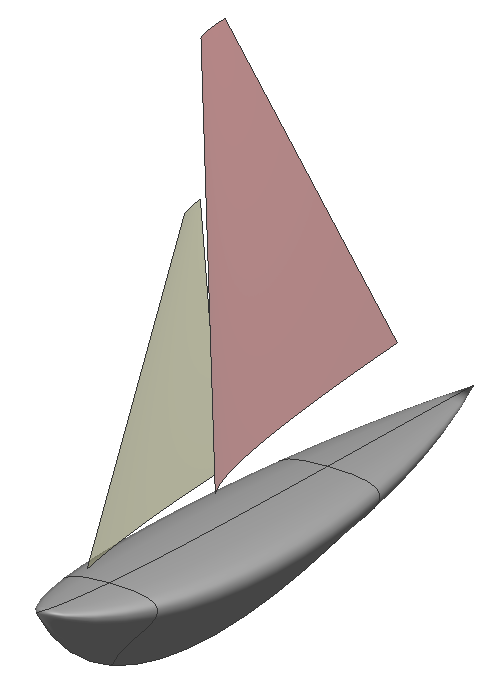The Sail7 application has been implemented in flow5, with roughly the same philosophy and functionality. It already benefits from some of the new analysis and UI functionality, and it is also expected to exhibit improved stability and robustness due to the deep code rewrite and refactoring performed for flow5.
The idea going forward is to have both the plane and boat analysis modules benefit equally from the development of the UI and the analysis engine. This is also a guarantee that the sail analysis module will no longer be left behind, as was the case for Sail7.
There is considerable potential for improvement in the Sail Analysis module. To optimize the use of resources and time, user feedback will determine the development direction, and which new functionality should be added first.
For instance, the main unresolved issue is the description of the sail geometry. There are several to choose from in flow5:
- The NURBS type sail, similar to the implementation in Sail7
- The spline type sail, where each chordwise section is represented by a spline
- The wing type sail, with a description similar to the way wings are described in xflr5
However, since all these sail types only describe more or less accurately the shape of a sail under wind pressure, new descriptions will probably need to be added depending on future suggestions.

Sail shapes may be imported into flow5 provided their description fits into one of the existing templates mentioned above. For other sail descriptions, please post a request to add the feature.
Another difference in functionality with Sail7 is that hulls are not included in the analysis, for two main reasons.
- Firstly, this increases the complexity of the analysis by a huge factor, since the interaction of the hull and water would need to be managed somehow.
- Secondly, the disturbance to the flow created by the hull seems far less important than the ground effect created by the water’s surface, as can be seen from the shape of the streamlines exiting the sails’ trailing edges.
The Sailcut http://www.sailcut.com/ description of sails has been removed from flow5, mainly because the developed shape of a sail is not convertible to the shape it takes under wind loads.
Please check out this YouTube demo for a quick overview of flow5’s sail analysis module.
Finally, please note that scripting capability is not yet implemented for sail analysis.
